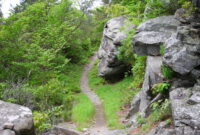Mountains to Climb Near Me: This phrase encapsulates the adventurous spirit of countless individuals seeking thrilling escapes and challenging climbs. Whether you’re an experienced mountaineer seeking a new conquest, a beginner eager to test your limits, or a family looking for a memorable outdoor experience, finding the perfect mountain nearby is key. This exploration delves into the practical aspects of locating and preparing for climbs, considering factors such as user experience levels, geographical limitations, and readily available resources. We’ll navigate the digital landscape to uncover reliable sources of mountain information and discuss the best ways to organize and present that data for a safe and enjoyable adventure.
From understanding the nuances of online search queries to visualizing mountain data effectively, we’ll cover everything needed to plan your next climb. We will also address potential challenges, such as ambiguous search terms and handling errors, to ensure a smooth and informative experience for every user. Ultimately, this guide aims to empower individuals to confidently discover and conquer the mountains within their reach.
Presenting Mountain Information Effectively
Presenting mountain information clearly and concisely is crucial for both experienced climbers and newcomers. Effective organization and presentation of data can significantly enhance safety and enjoyment of the climbing experience. This section will focus on improving the accessibility and usability of mountain-related information.
Mountain Information Table
A well-structured table provides a quick overview of essential mountain details. The following table displays mountain name, location, difficulty level (rated on a scale of 1-5, with 1 being easiest and 5 being most difficult), and elevation. Note that difficulty levels can be subjective and depend on factors such as weather conditions and individual experience.
| Mountain Name | Location | Difficulty Level (1-5) | Elevation (meters) |
|---|---|---|---|
| Mount Whitney | Inyo County, California, USA | 4 | 4421 |
| Mount Rainier | Pierce County, Washington, USA | 5 | 4392 |
| Longs Peak | Boulder County, Colorado, USA | 3 | 4345 |
| Half Dome | Yosemite National Park, California, USA | 5 | 2694 |
Key Safety Considerations for Mountain Climbing
Prioritizing safety is paramount in mountain climbing. Careful planning and adherence to safety guidelines are crucial for a successful and safe climb. The following points highlight essential safety considerations.
- Weather Conditions: Thoroughly check weather forecasts before and during your climb. Be prepared for sudden changes in weather, including temperature fluctuations, strong winds, and precipitation. Consider postponing your climb if severe weather is anticipated.
- Equipment: Ensure you have appropriate and well-maintained equipment, including sturdy hiking boots, layers of clothing suitable for varying temperatures, a first-aid kit, navigation tools (map, compass, GPS), sufficient water and food, and a headlamp.
- Trail Etiquette: Respect other hikers and the environment. Stay on marked trails to avoid damaging vegetation. Yield to uphill hikers. Pack out all trash and leave no trace of your presence.
- Physical Fitness: Assess your physical fitness level and choose mountains appropriate for your abilities. Train adequately beforehand to ensure you are prepared for the physical demands of the climb.
- Inform Others: Always inform someone of your climbing plans, including your route, estimated return time, and emergency contact information.
Organizing Mountain Information by Proximity
Organizing mountain information based on proximity to a user-specified location requires a system capable of calculating distances. This can be achieved using geographical coordinates (latitude and longitude) for both the user’s location and the mountains. A database containing mountain information, including coordinates, would be necessary. Algorithms like the Haversine formula can then be used to calculate the great-circle distance between the user’s location and each mountain. The mountains can then be sorted and displayed based on proximity. For example, a user in Denver, Colorado, would see Longs Peak listed before Mount Whitney.
Handling Ambiguity and User Errors
Building a robust mountain-finding application requires anticipating and gracefully handling situations where user input is unclear or inaccurate. This involves strategically addressing ambiguous search terms and providing informative error messages for invalid input, ensuring a smooth and user-friendly experience. Effective error handling enhances user satisfaction and helps maintain data integrity.
Ambiguous searches and invalid inputs are common occurrences in location-based applications. The following strategies address these challenges, providing solutions for a more resilient and user-friendly system.
Strategies for Handling Ambiguous Search Queries
Ambiguous queries, such as “mountains near me,” lack crucial specificity. To improve accuracy, the application should employ several strategies. Firstly, it can employ geolocation services to determine the user’s location and then search for mountains within a predefined radius. Secondly, the system can prompt the user to refine their search with additional criteria, such as a specific mountain range or desired difficulty level. Thirdly, the application could present a selection of nearby mountain ranges, allowing the user to select their desired climbing destination from a curated list. For instance, if a user searches “mountains near me” and the system detects they are near the Appalachian Mountains, it could present a list of prominent peaks within that range, such as Mount Mitchell or Mount Washington.
Methods for Handling Invalid or Incomplete User Input
Invalid or incomplete input, such as an incorrect address or missing altitude data, can cause system errors. The application must validate user input before processing. This includes checking for data type consistency (e.g., ensuring altitude is a number), verifying address validity using geolocation services, and handling missing fields by providing default values or prompting the user for the necessary information. For example, if a user enters an invalid postal code, the application could display a message indicating the error and provide suggestions for correcting the input. Similarly, if a user omits altitude information, the application could use a default altitude value or request the user to specify it.
Error Messages for Unavailable Data or Invalid Search Parameters
Providing clear and concise error messages is crucial for a positive user experience. The following list outlines examples of effective error messages:
- “No mountains found within the specified radius. Please broaden your search area or refine your criteria.” (For searches with no results)
- “Invalid location data. Please ensure you have entered a valid address or coordinates.” (For incorrect location input)
- “Search parameters are invalid. Please check your input and try again.” (For general invalid input)
- “An unexpected error occurred. Please try again later.” (For server-side or unknown errors)
- “Insufficient data available for this mountain. Please check your search terms.” (For missing mountain data)
These messages clearly communicate the issue to the user, guiding them towards a successful search. They avoid technical jargon and offer actionable advice.
Last Recap
Planning your next mountain climb should be an exciting endeavor, not a daunting task. By utilizing the readily available resources and employing effective strategies for data gathering and interpretation, you can confidently embark on your adventure. Remember to prioritize safety, research thoroughly, and appreciate the majestic beauty of the mountains. Whether you’re a seasoned climber or just starting out, the thrill of conquering a peak is an experience unlike any other, and with careful planning, it’s an experience within reach.




